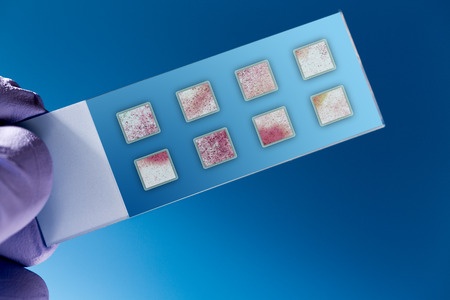Analysis of DNA Methylation
The regulation of gene expression is a very complex process controlled by various factors. Among epigenetic regulation mechanisms, DNA methylation at CpG island and gene promoter plays an important role in gene expression and silencing. Alterations of the mechanisms of epigenetic regulation are at the basis of numerous pathologies including cancer.
Microgem Lab provides the “DNA Methylation Analysis” service on microarray by immunoprecipitation (MeDIP-chip). With methylation arrays focused on CpG Island or promoter regions, it is possible to investigate epigenetic methylation events that alter the regulation of gene expression. Possibility to analyze DNA extracted from tissues and cells of a wide variety of organisms and species.
Workflow of the “DNA methylation analysis by immunoprecipitation (MeDIP-chip)” service
- Consultancy – A free consultation will be provided for project optimization (number of samples to be analyzed, methodology, costs). During the consultation phase, advice will be provided on the extraction method to be taken. Alternatively you can take advantage of our DNA isolation service.
- Sample Requirements –
- 10-15 ug of genomic DNA from tissues and cells of human and mouse, at concentration >5 ug/ul
- DNA samples, undergo to RNase treatment, are required to have an OD 260/280 ratio ≥8 and 260/230 ratio ≥1.9
Please supply a shot of agarose gel.
- Sample Quality Control (QC) - After receiving DNA samples, our researchers will evaluate the integrity and purity of each sample by MaestroNano microvolume reader and Bioanalyzer. Possible contamination for each sample will also be assessed. The results of this analysis will be sent before proceeding with the next steps of the service.
- Immunoprecipitation of Methylated DNA - The methylated DNA, after sonication, will be immunoprecipitated by a monoclonal anti-methylcytosine antibody linked to magnetic beads. The eluted DNA and the DNA reference will be extracted by organic solvents.
- Labeling, Hybridization and Reading of the Microarray – The immunoprecipitated DNA sample and the DNA reference will be labeled with Cyanine5-dUTP and Cyanine3-dUTP respectively, purified and co-hybridized on specific microarray. For labeling monitoring, Spike-In controls will be included, made up of partially methylated and highly methylated PCR products. After washing, the microarray will be analyzed by scanner and the fluorescence image will be digitized.
- Data Analysis – Analysis of Cyanine5/Cyanine3 ratios. If two or more arrays are performed for each sample, a normalization is performed.
- Statistical Data Analysis – Identification and quantification of methylated genomic regions by specific algorithms (Z-score and BATMAN – Bayesian Tool for Methylation Analysis).
- Final Report – At the end of the project, a final report will be provided including the results of the various stages of project development. The results presented in the report can be discussed with the scientific team.
